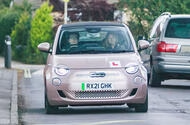The current landscape of driving tests in the UK is fraught with challenges, as a significant backlog has emerged, leaving many learner drivers in a precarious situation. The waiting times for practical driving tests have reached alarming levels, with over half of Britain’s test centres reporting waits exceeding six months. This article delves into the underlying causes of this crisis, the impact on learners, and potential solutions to alleviate the situation.
Understanding the Backlog Crisis
Recent data from the Driver and Vehicle Standards Agency (DVSA) reveals that the average waiting time for a practical driving test has surged from three and a half months to five months. This increase is largely attributed to the pent-up demand that accumulated during the COVID-19 lockdowns. Lorna Lee, a spokesperson for AA Driving School, emphasizes that the DVSA has struggled to meet this demand, which has only intensified as more individuals seek to obtain their driving licenses.
The backlog has not only affected the number of available test slots but has also led to a significant increase in stress and financial strain for learners. Many are now faced with the daunting prospect of waiting for months, if not longer, to secure their test dates. This situation is particularly concerning for those who require a license for employment, as delays can hinder career advancement.
The DVSA’s Response and Its Limitations
In an effort to address the backlog, the DVSA has implemented changes aimed at curbing the resale of test slots. These measures include stricter terms and conditions for booking tests, designed to prevent driving instructors from securing slots for students they do not teach or for learners who have no intention of using them. While these actions may tackle some symptoms of the backlog, they do not address the root cause: a lack of available test slots.
Lee points out that the DVSA’s temporary increase of 150,000 test slots between October 2023 and March 2024 provided a glimpse of hope, as average waiting times began to decrease. However, the lack of sustained capacity improvements has allowed the backlog to swell once again. The DVSA’s plan to hire an additional 450 examiners this year is a step in the right direction, but experts like Ricky Tang, an independent driving instructor, express skepticism about whether this will be sufficient to meet the ongoing demand.
The Human Cost of Delayed Tests
The ramifications of the driving test backlog extend beyond mere inconvenience. Learners are investing significant amounts of money into lessons and preparation, only to face lengthy waits for their tests. Tang notes that some learners, particularly those who need a license for their jobs, are feeling the pressure acutely. For instance, medical professionals requiring a driving license to fulfill their roles are facing career setbacks due to the delays.
Moreover, the psychological toll of waiting can be substantial. Heman Leung, who moved to the UK from Hong Kong, shared his experience of the stress and anxiety that accompanied his lengthy wait for a driving test. After multiple attempts and a wait of six months for his initial test, he finally passed on his fourth try. The emotional weight of this experience was profound, affecting not only his confidence but also his ability to support his family.
Innovative Solutions to Alleviate Waiting Times
As the backlog continues to grow, innovative solutions are necessary to alleviate the strain on learners and the testing system. Tang suggests implementing an airline-style standby system, where candidates who do not show up for their tests could allow others from the waiting list to take their place. This approach could significantly reduce waiting times and ensure that slots are utilized more effectively.
Furthermore, the DVSA’s ongoing efforts to combat the misuse of automated booking systems, or “bots,” are crucial. These programs have been known to hoard test slots, making it even more difficult for genuine learners to secure appointments. While the DVSA has made strides in closing accounts that abuse the system, the persistence of these issues highlights the need for continued vigilance and reform.
The Path Forward
The current crisis in the UK driving test system underscores the urgent need for comprehensive solutions that address both capacity and accessibility. As the DVSA works to increase the number of examiners and improve booking practices, collaboration with driving instructors and stakeholders in the industry will be essential. By fostering a more efficient and equitable testing environment, the goal of reducing waiting times and alleviating the stress on learners can become a reality.
In conclusion, the challenges facing learner drivers in the UK are significant, but with concerted efforts and innovative solutions, there is hope for a more streamlined and supportive driving test experience. The future of driving in the UK depends on addressing these issues head-on, ensuring that all learners have the opportunity to obtain their licenses in a timely and stress-free manner.

